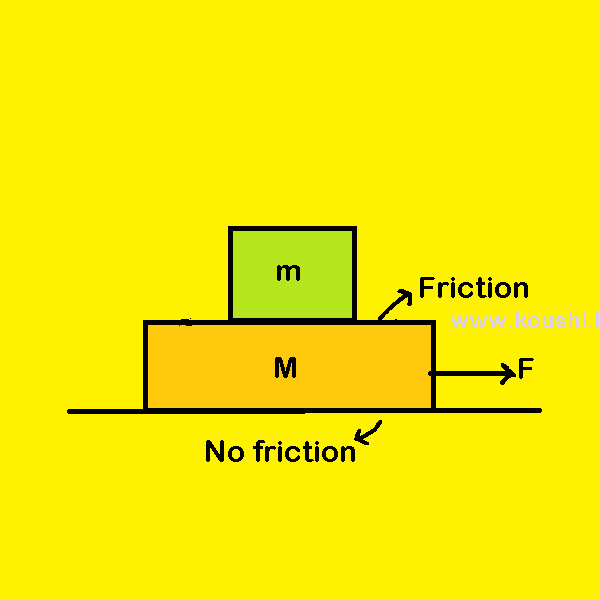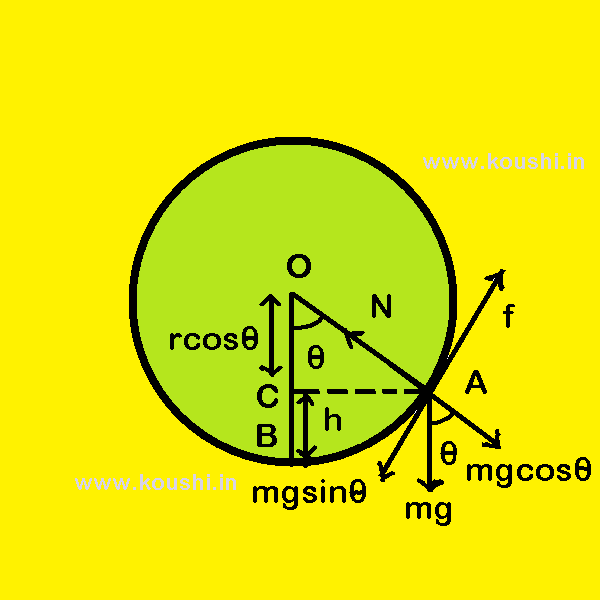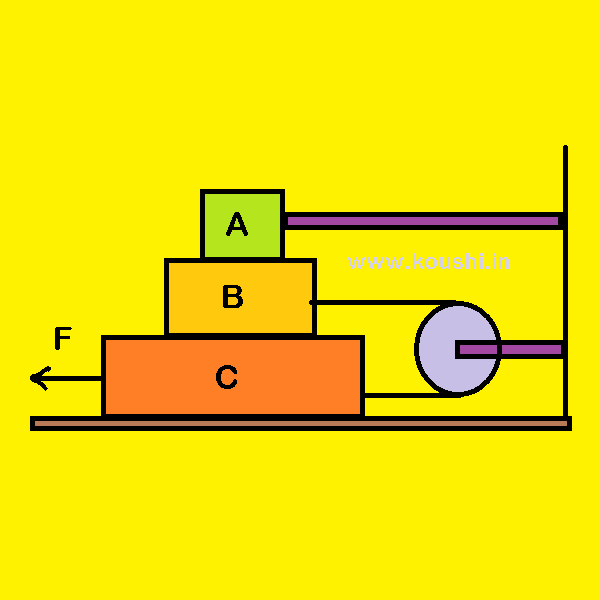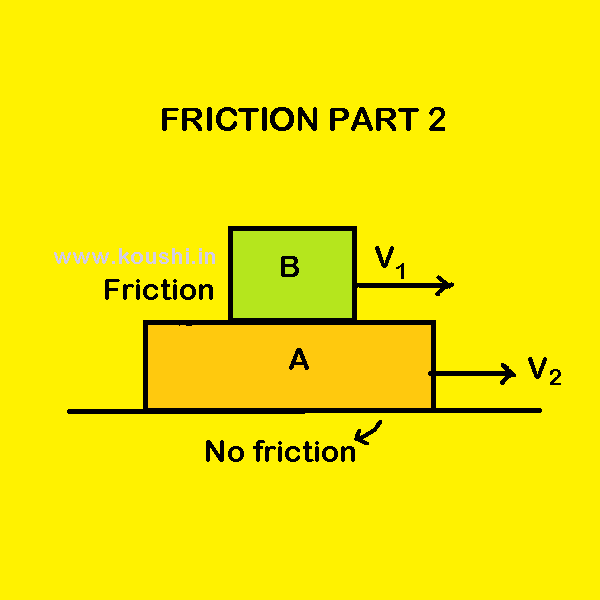Friction related concepts:
1. A car of mass m is moving with speed u and brake is applied so that it travels distance s before stop. Find frictional force and coefficient of friction between the wheel and the road.
Using the equation v2 = u2 + 2as we get, 0 = u2 – 2as or, a = ![]() [retardation]
[retardation]
Therefore, frictional force F = ma = ![]() .
.
The normal reaction force N = mg.
Therefore, coefficient of friction between the wheel and the road is ![]() =
= ![]() =
= ![]() =
= ![]() .
.
2. A block of mass M is placed on smooth horizontal ground. Another block of mass m (< M) is places on M. The coefficient of static friction between M and m is ![]() . Now F force is applied on M. Find the value of F so that m tends to slide over M.
. Now F force is applied on M. Find the value of F so that m tends to slide over M.
The acceleration of both the bodies remain same, as m is not moving over M.
The acceleration is a = ![]() . The pseudo force experienced by m is ma =
. The pseudo force experienced by m is ma = ![]() .
.
As m tends to slide over M, then ma = limiting friction.
Or, ![]() =
= ![]() mg
mg
![]() F =
F = ![]() (M+m)g.
(M+m)g.

Click the button to get the video explanation of this part.
3. A particle of mass m is placed in the inner wall of a spherical shell of radius r. If coefficient of friction between the inner surface and the particle is ![]() =
= ![]() , then at what height from the lowest point of the sphere the particle can be placed?
, then at what height from the lowest point of the sphere the particle can be placed?
Let the particle can be placed at point A. The component of weight of the particle mgsin![]() tend to move it downward. Therefore, friction (f) acts in the upward direction. For equilibrium of the particle, f = mgsin
tend to move it downward. Therefore, friction (f) acts in the upward direction. For equilibrium of the particle, f = mgsin![]()
Or, ![]() N = mgsin
N = mgsin![]()
Or, ![]() mgcos
mgcos![]() = mgsin
= mgsin![]()
Or, tan![]() =
= ![]() =
= ![]()
![]()
![]() = 300
= 300
AC is perpendicular on OB. So, OC = OAcos![]() = rcos
= rcos![]() =
= ![]() .
.
Height h = BC = OB – OC = r – ![]() = r(1 –
= r(1 – ![]() )
)

4. Three blocks A, B and C each of mass m, 2m and 3m respectively are placed one over another as shown in figure. Block A is fixed with the wall by a massless rod. Block B and C are connected by inextensible string over a massless frictionless pulley. The coefficient of friction for all surfaces is ![]() . Find the force F applied on C to move it with constant speed.
. Find the force F applied on C to move it with constant speed.
The friction between block A and B is f1 = ![]() mg.
mg.
Similarly the friction between block B and C is f2 = ![]() (m+2m)g = 3
(m+2m)g = 3![]() mg and fiction between block C and table is f3 =
mg and fiction between block C and table is f3 = ![]() (m+2m+3m)g = 6
(m+2m+3m)g = 6![]() mg.
mg.

As block C moves with constant speed towards left so Block B applies friction f2 on it towards right. Therefore, from free body diagram of C, F = f2 + f3 + T = 3![]() mg + 6
mg + 6![]() mg + T = 9
mg + T = 9![]() mg + T —— (i)
mg + T —— (i)
Block C applies frictional force on B towards left. As A is rest and B moves towards right then A applies frictional force on B towards left.
Therefore, from free body diagram of B, T = f1 + f2 = ![]() mg + 3
mg + 3![]() mg = 4
mg = 4![]() mg ——-(ii)
mg ——-(ii)
From equation (i) and (ii) we get, F = 9![]() mg + 4
mg + 4![]() mg = 13
mg = 13![]() mg.
mg.
Click the button to get the video explanation of this part.
